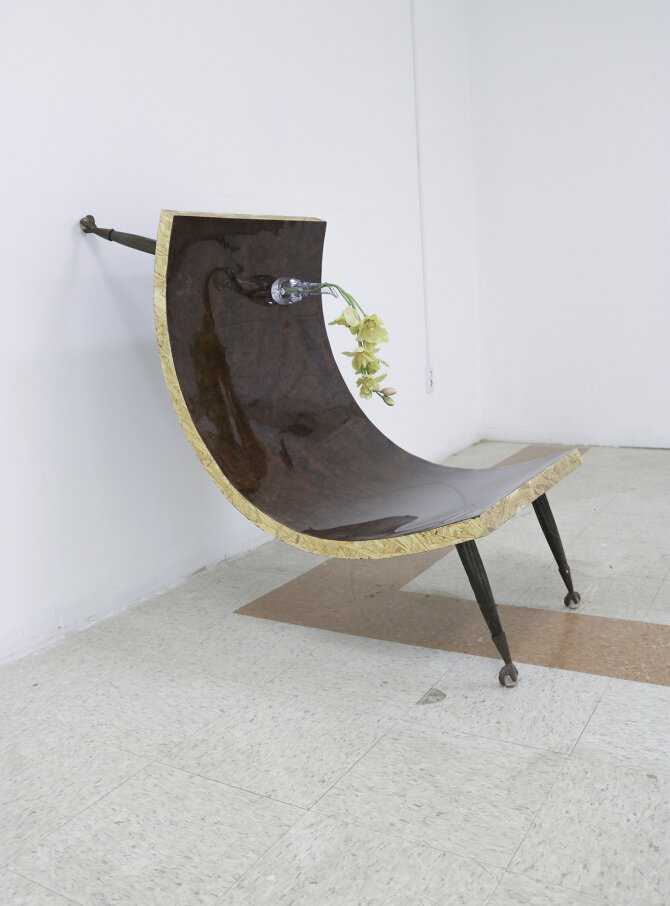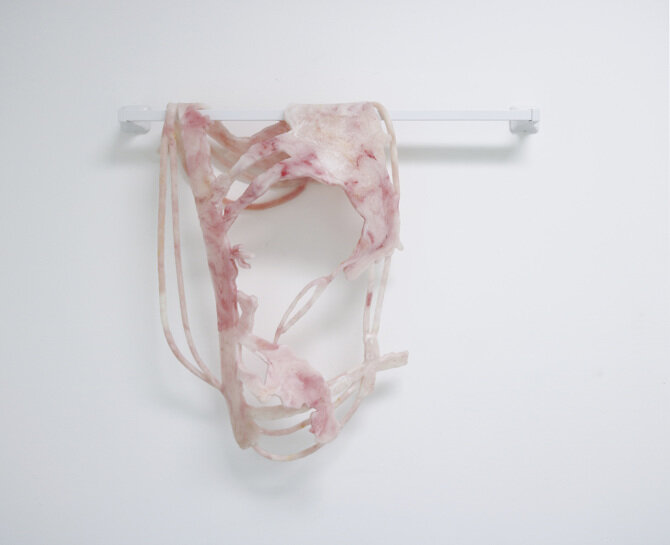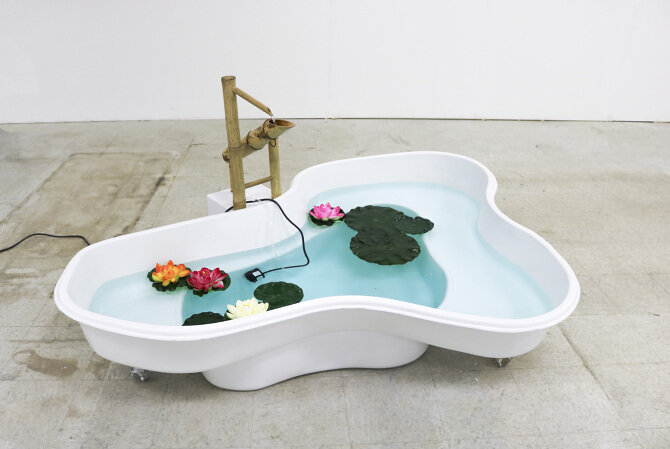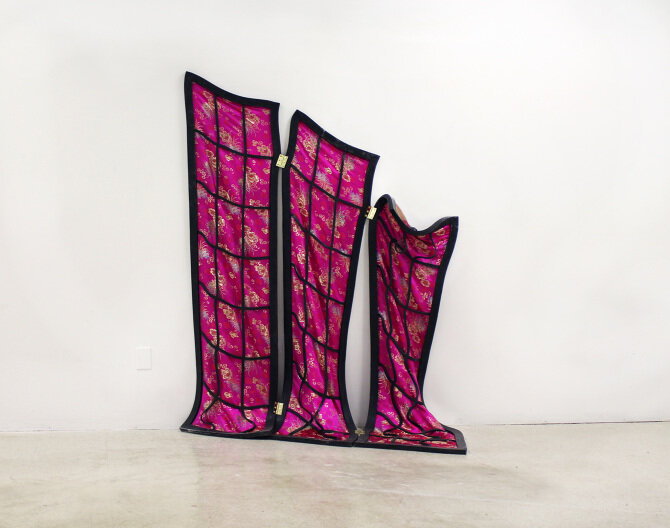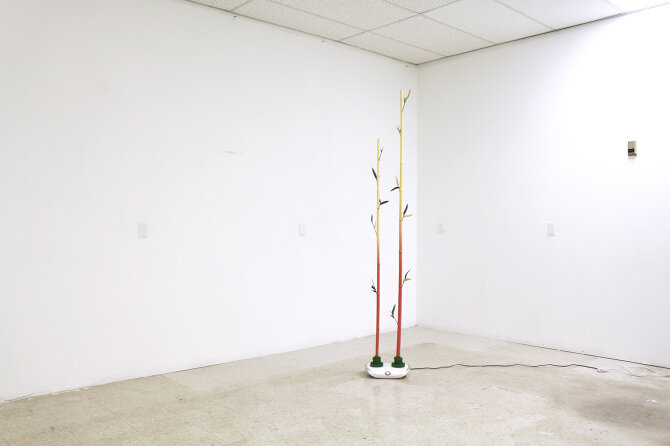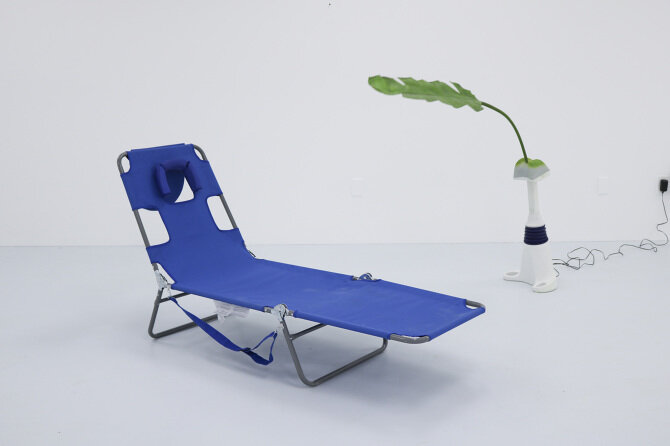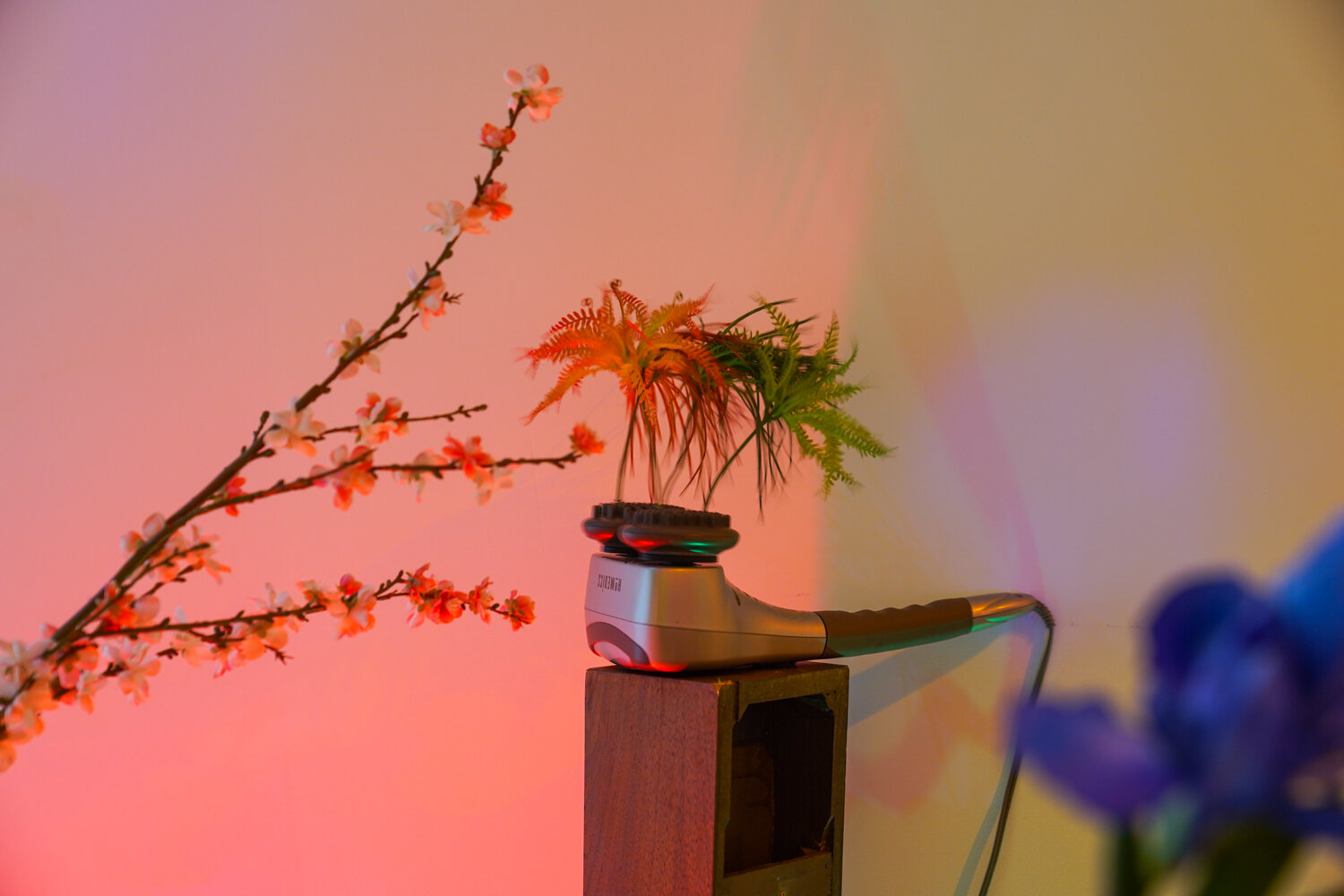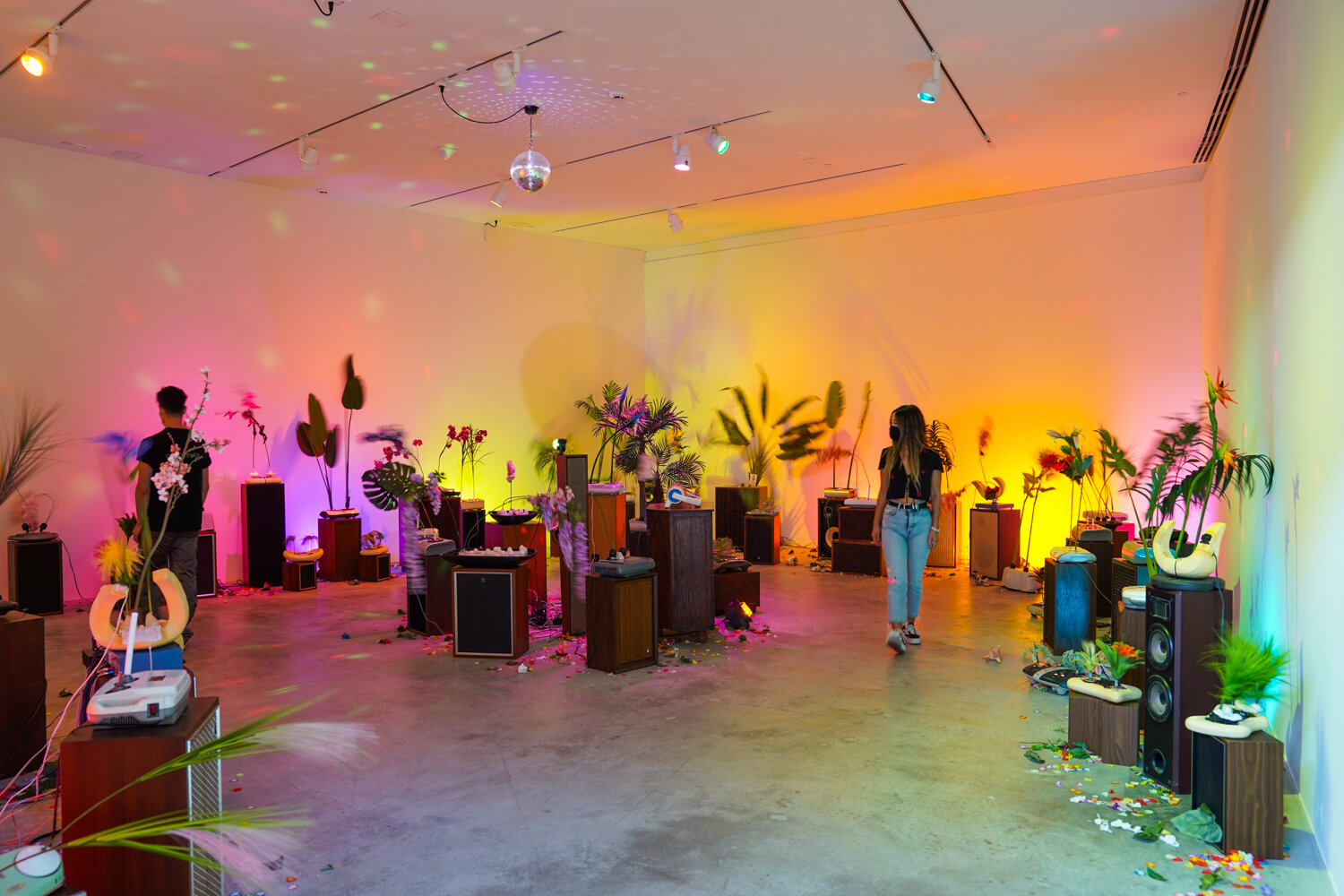Q&A: Rachel Youn
By Jess T. Dugan | February 4, 2021
Rachel Youn (b. 1994, Abington, PA) received their BFA from the Sam Fox School of Design and Visual Arts at Washington University in St. Louis. Youn has had solo exhibitions at the Bermuda Project in Ferguson, MO; Monaco Project Gallery, Erica Popp Studios + Gallery and the Millitzer Gallery in St. Louis. Their work has been included in group exhibitions in St. Louis at the Sheldon Art Galleries, Gallery 210, Parapet Real Humans, the Luminary, and Flood Plain. Additional group exhibitions include Tiger Strikes Asteroid, Los Angeles; Granite City Art and Design District, Granite City, IL; Here/There, Portland, OR; Open House, Kansas City, MO; and CICA Museum, Gyeonggi-do, South Korea. Youn is a recipient of the Regional Arts Commission Artist Support Grant and the Vermont Studio Center Fellowship. Most recently, they received the 2020 Great Rivers Biennial Award and opened the solo exhibition Gather at the Contemporary Art Museum in St. Louis, open through February 21, 2021.
Jess T. Dugan: Hi Rachel! Thanks so much for taking the time to speak with me today. Let’s start at the beginning: how did you initially discover art-making, and what was your path to getting to where you are today?
Rachel Youn: Hi! Thanks for having me. Like many, I grew up with a love for drawing. My biggest influences were post-Impressionist paintings and Saturday morning cartoons. With the support of my high school art teachers, I applied for college and studied art at Washington University in St. Louis (much to the chagrin of my father who wanted me to serve in the military or Christian ministry). After a fateful decision to switch tracks from illustration to sculpture, I graduated with my BFA in 2017. I was fortunate to have a few show opportunities to get me through the post-grad slump, and I started to gravitate towards objects and materials that betrayed expectations of function. I played around with faux-finishes, fake “natural” phenomena, soft sculpture, and domestic goods. My interest in lively and expressive objects led me to creating the kinetic work I’m best known for now.
JTD: You work in a variety of media, including sculpture and installation. What is your process of seeing a piece through from idea to finished presentation? How do you decide what form it will take?
RY: I find my practice to be very sporadic and difficult to isolate into any linear process, but I’d say a lot of finished work sprouted from moments of observation from my daily life that caused me to think, Huh, that’s funny. For example, I noticed that for a while, the Carrara marble “look” became trendy in home decor and Internet culture. This led me to a body of soft sculpture that poked fun at how home goods were manufactured to only emulate the look of marble while shortcutting the cost of the material itself.
My current body of kinetic work is mainly driven by whatever motors I find fascinating and can get my hands on. A lot of my work uses at-home massagers to create movement. I source the massagers secondhand so new pieces are limited by what’s available on the market. From there, I observe the possible movement each massager can potentially make and then I extend that motion with fake flowers and branches. However, I’m not always pairing plants with massagers to create a specific effect, as I like to let each piece do its own thing.
JTD: Tell me more about sourcing your materials. You look in many different places, including thrift stores, Craigslist, Facebook Marketplace, and home decor stores. Is this sourcing an integral part of your process, or more of a means to an end? Are you interested in the histories of the objects you find?
RY: At first I purchased massagers secondhand because it was more cost-effective, but over time it actually became an important part of the work. I realized these massagers I bought were at one point in time purchased to give the buyer the satisfaction of a warm, intimate and healing touch without actual human contact. The knobs and nodes of these appliances spin and twist like thumbs would into flesh. I deduced that people were selling their massagers because in some way they were dissatisfied with the results or just plain forgot about them. I found this history and narrative of failure to be an endearing quality of these objects, and I like to think that now they can just dance, no longer burdened by their expected function.
JTD: Talk to me about artifice in your work. You said in an interview with St. Louis Magazine that you’re “intrigued by cheap objects” that want to “pretend that they are something better than what they are”. How do you feel that this artifice ties in with identity?
RY: When I was growing up, my dad collected statuettes and decor from Hobby Lobby and other home decor stores. I didn’t realize it at the time, but each of these objects was pretending to be something else. I was surrounded by bronze-esque busts and marbleized miniatures of Michaelangelo’s David and the Venus de Milo. They were all manufactured in bulk, cast in plaster into molds and occasionally sprayed with paint to make them look antiquated. There’s a romance to this aspiration. Like a lot of people, I suffer from imposter syndrome, feeling that I am a fraud and not as good/talented/smart as my peers. I think people of color and queer people feel this especially—those who straddle multiple cultures and identities or those who need to pass as normative to survive never really feel at home or entirely true to themselves. In a way, I identify with these kitschy home decor forgeries—not because they aim to deceive necessarily, but because they were made in the image of something else, yet they are so far from the source that they become something entirely different.
Gather, Contemporary Art Museum, St. Louis
Massagers, artificial plants, speakers, sound, 2020
Installation photograph by Dusty Kessler
JTD: Let’s talk about your current installation, Gather, at the Contemporary Art Museum in St. Louis, which is part of the Great Rivers Biennial 2020. This installation expands upon earlier sculptural work, pushing it to a larger and more immersive scale. How did you conceive of this project, and what was your process for bringing it to fruition?
RY: I was incredibly excited to have the resources and opportunity to scale my work up in a way I never could have dreamt of! I had never shown multiple kinetic pieces in one space so I decided to go all out and fill the entirety of the gallery. I had also never had an entire year to create a show, and I found that the process ultimately drove the final result. The most difficult part of making the work was letting go of typical art show conventions of bright white space and static objects. I knew that what I was presenting was going to make me uncomfortable, that the sculptures move wildly and even sometimes touch the viewer, that there’d be a loud music, that the gallery would be dark and lit only by colorful gelled light and a disco ball. It felt super risky at the time, but I couldn’t be happier with how things turned out and how people have reacted to entering the space. I also had the opportunity to collaborate with local St. Louis band GodsBod to create a stellar dance track to accompany the moving sculptures.
JTD: It’s great to hear more about how this show came together. I really loved being in the space, surrounded by your sculptures and completely enveloped by the music, light, and color. This experience reminded me of being in queer spaces, which often have a kind of sacredness within them. They become a place where folks can exist freely outside of typical societal pressures and expectations, where desire can exist unguarded and queerness is not just accepted, but celebrated. These spaces have been transformative and life-affirming to so many of us. Yet, as I’m sure you know, so many queer spaces – primarily bars and nightclubs, and especially those for women and trans/non-binary folks – are closing. Were you thinking about this when you were making this work? What are your thoughts about shifting queer space, more broadly? And what role does spirituality play in your larger practice?
RY: As the work developed from an austere white cube gallery show into the colorful and lively installation it is now, I was definitely thinking about safe spaces and my own complicated relationship to them. I acknowledged my own timid tip-toeing into the world of queerness. Mainstream culture often portrayed the image of liberated queerness as dancing wildly in dark sweaty nightclubs, but for a lanky awkward young adult who would have rather dropped dead than join a dance floor, being queer was anything but. I like to think that safe spaces are not monolithic.
When you stand in the exhibition, you’ll also hear bits of Korean church music. The more and more I observed my own work, the more I thought about the commonality between people who liberate their bodies and voices in church and those that do so on the dance floor, or at a house party, or at a rock show, etc. It was my way of reconciling church and queerness, worlds that I used to believe existed in perfect opposition. I feel that now I can better appreciate the complexity of the safe spaces I’ve existed in. Even though I haven’t believed in God since middle school, there’s a safe space being surrounded by Korean church members vicariously praising the Lord. And while I’m more likely to be plastered against the wall than jumping into a packed dance floor, there’s a beauty to the vulnerability of moving bodies.
When I was making this work I had no idea how much the pandemic would change its effect. Some people have told me that they’ve ached for queer nightlife and that the show offered them a moment to relive these presently impossible moments. I feel incredibly happy that I could give them that feeling.
Gather, Contemporary Art Museum, St. Louis
Massagers, artificial plants, speakers, sound, 2020
Installation photograph by Dusty Kessler
JTD: That’s wonderful, and definitely rings true for me. I look forward to the day when we can all be in physical space again and be close to other people without fear.
Going back to your show itself, the description says your sculptures are “often times clumsy, erotic, and absurd.” Talk to me about this combination – how do these three elements overlap and intersect?
RY: They are exactly that! By nature of using massager motors and artificial plants, they flail around in such distinct ways. I love that each sculpture has its own personality and that some pieces look like couples or groups of friends dancing together. A lot of plants slap together awkwardly, others get violently twisted together like they’re wrestling for dominance. Some groove with a back and forth motion that is, well…suggestive. I think my appreciation for the sculptures’ movements stems from my own anxiety about my bad dance moves—I love that the works can just unabashedly do their own thing.
JTD: What are you currently working on? What’s on the horizon for you as an artist?
RY: Right now I’m dreaming up ambitious projects that I’ll hopefully get to execute in the next few years. In the meantime, I’m tinkering around with motors and am looking to build mechanisms of my own rather than relying on preexisting appliances. I just ordered a windshield wiper motor that I’m stoked to play with! This year I’ll be attending ACRE Residency in Steuben, WI, and Gather will travel to the University of Missouri in Columbia, MO, this fall.
JTD: Wonderful Rachel, thanks so much!
Gather, Contemporary Art Museum, St. Louis
Massagers, artificial plants, speakers, sound, 2020
Installation photograph by Dusty Kessler
All images © Rachel Youn



